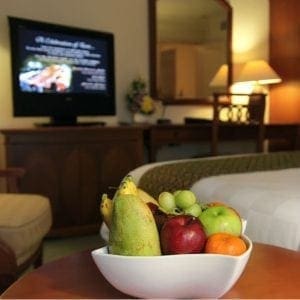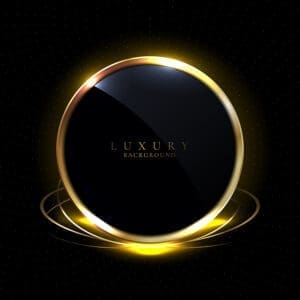 With Oracle Hospitality having the largest market share of any property management system (PMS) in the world, when they move the world listens. Fortunately, I was invited to share in the experience of their annual partners conference, Oracle Industry Connect, held in New York City in mid-April.
With Oracle Hospitality having the largest market share of any property management system (PMS) in the world, when they move the world listens. Fortunately, I was invited to share in the experience of their annual partners conference, Oracle Industry Connect, held in New York City in mid-April.
Stemming from this conference, the company’s hospitality division has released a new white paper addressing some of the ways modern travelers’ purchasing and loyalty habits are changing as well as what hotels can do to take advantage of the findings. Please note that while Oracle’s strategic position is formidable, there are many other PMS solutions available to hoteliers and this posting should not be construed as an endorsement of one system over any other.
During a brief interview with Laura Calin, Vice President of Solutions and Strategy for Oracle Hospitality, it was made clear that the company’s primary goal is to help improve and personalize the guest experience. To accomplish this, as a software solutions provider, Oracle is actively working to increase data connectivity through its open API technologies and building systems with adaptive intelligence, otherwise known as machine learning.
Armed with more data, enriched guest profiles and heightened inference tools, hoteliers can then make better-informed decisions about how best to service their customers, especially when combined with Oracle’s new simplified dashboard to give frontline staff immediate access to actionable intelligence. When faced with a mounting loyalty challenge, hoteliers must now wield all the data at their disposal to craft highly personalized experiences in order to convert indirect to direct bookings and to derive advocacy from an increasingly fickle audience.
Where the divide comes into play is in how hotels perceive travelers versus what the latter group is actually saying. Based upon a survey of some 13,000 consumers across nine countries, the study reveals that guests are in fact quite discerning when it comes to joining a loyalty program, with three-quarters stating that they rarely sign up or only do so when it’s highly relevant. Moreover, just over one-fifth of guests believe that hotel offerings are mostly relevant to them while another two-fifths claiming that hotel offerings are rarely pertinent to their travel goals.
In other words, we aren’t listening to our guests enough, nor are using what’s been said and what’s been purchased to hone our products to meet this new consumer paradigm.
Interestingly, the study also highlights the rise of social advocacy as playing a dominant role in travel behavior. Over half of travelers will scrutinize a brand’s social presence before buying while just under 50% will publicly support a hotel on social media in exchange for a reward. And speaking of loyalty programs, three-quarters of those surveyed prefer immediate benefits over accumulating points, frequent rewards that are not dependent on earning points and systems that tailor future offers to customers based upon past acceptances or rejections.
My takeaway from this is that hotels must first fully integrate their rewards programs into their CRMs so that we not only know our guests better but can give them exactly what they want in order to keep them loyal, or at the very least offer them something that’s actually appealing.
Central to the white paper were four modern traveler archetypes that Oracle derived from these statistics and for you to take note so you can adjust your marketing efforts accordingly.
- Broadcaster: more likely to rave about a great hotel experience on social media; also motivated to do so by prospect of rewards or improved online status
- Enthusiast: drawn to exceptional service and amenities; likes to fully engage with a beloved brand by experiencing all that it has to offer
- Lazy Loyal: follows a Ôbetter the devil you know’ mentality; seeking features that streamline or automate hotel experience
- Seeker: likes to shop around; price and personalized promotions are by far the dominant decision-making factors
While I’m not one to typically typecast customers according to a specific set of criteria, there are indeed some powerful observations here that can be utilized to enhance sales. Primarily, by integrating your guest profile history with your marketing systems, you can now customize your offers according to what you already know about a person or by asking a prospective consumer for a bit of personal information before suggesting a bespoke promotion. Next, this attitude should also be applied to your onsite experience where you now have the technological resources to design new features and retrofit existing ones so that they’ll be appreciated by visitors.
Above all, what we are talking about here is the personalization of the guest experience, from initial sales offer right through to checkout. For some hotels, taking the first step in this direction may be training your front desk staff to use the systems already in place so they are ready to greet guests by name. For others, it might mean a joint rewards program that offers onsite credits for social media posts. Whichever way you choose, PMS companies such as Oracle are giving you the tools to unify all your disparate data points to make this possible.
About the author
 One of the world’s most published writer in hospitality, Larry Mogelonsky is the principal ofÊHotel Mogel Consulting Limited, a Toronto-based consulting practice. His experience encompasses hotel properties around the world, both branded and independent, and ranging from luxury and boutique to select-service. Larry is also on several boards for companies focused on hotel technology. His work includes four books ÒAre You an Ostrich or a Llama?Ó (2012), ÒLlamas RuleÓ (2013), ÒHotel LlamaÓ (2015), and ÒThe Llama is InnÓ (2017). You can reach Larry atÊlarry@hotelmogel.comÊto discuss hotel business challenges or to book speaking engagements.
One of the world’s most published writer in hospitality, Larry Mogelonsky is the principal ofÊHotel Mogel Consulting Limited, a Toronto-based consulting practice. His experience encompasses hotel properties around the world, both branded and independent, and ranging from luxury and boutique to select-service. Larry is also on several boards for companies focused on hotel technology. His work includes four books ÒAre You an Ostrich or a Llama?Ó (2012), ÒLlamas RuleÓ (2013), ÒHotel LlamaÓ (2015), and ÒThe Llama is InnÓ (2017). You can reach Larry atÊlarry@hotelmogel.comÊto discuss hotel business challenges or to book speaking engagements.
This article may not be reproduced without the expressed permission of the author.



















